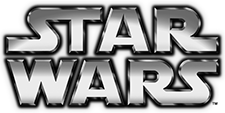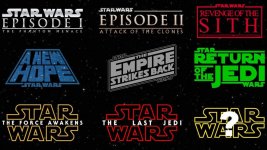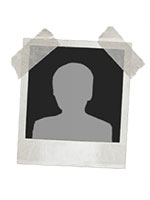Whether you're new to the Star Wars franchise or you've watched them all before, you might be wondering what order the movies go in. The answer isn't hard to find, but you might not be sure where to begin.
Episode IV: A New Hope
Originally titled Star Wars, the movie was released in 1977. It was followed by The Empire Strikes Back and Return of the Jedi. All three were digitally remastered for the 20th anniversary of their release.
The climax of A New Hope features the assault on the Death Star. During this attack, Luke Skywalker (Mark Hamill) sees two ships engaged in combat beyond the atmosphere. He runs down a trench toward the Death Star exhaust port. The resulting blaster fire from the stormtroopers forces Luke and his friends to flee on the Millennium Falcon.
The film also features R2-D2 and C-3PO. These two droids were inspired by Lucas's Alaskan malamute dog Indiana. He also drew inspiration from Akira Kurosawa's 1958 film The Hidden Fortress. The music of the film is an homage to Kurosawa's movie.
The film was selected by the U.S. National Film Registry as one of the most important and culturally significant films of all time. It was also listed by the American Film Institute as one of the top 100 films of the 20th century.
The film was re-released as Episode IV: A New Hope in 1981. It was also released on DVD in September 2004. The DVD box set included a digital restoration and bonus discs with supplemental material. The trilogy was also re-released on two-disc Limited Edition DVD sets. These editions included scenes that weren't possible in the original release due to time and financial constraints.
Star Wars: Episode VII opens with the galaxy in a state of civil war. The rebels have won their first major victory by stealing the plans for the Death Star. The Death Star is a large structure capable of destroying planets. The rebels are able to hit the Death Star's vulnerable spot, but it explodes after Luke Skywalker fires proton torpedoes into the exhaust port.
The final film in the trilogy is Star Wars: Episode VIII. It is set nineteen years after the formation of the Galactic Empire. Darth Vader (David Prowse) is a powerful figure in the Galactic Empire. He is also an apprentice to Obi-Wan "Ben" Kenobi.
Rogue One
Whether you're planning to watch Rogue One: A Star Wars Story, you may be wondering where it fits into the Star Wars timeline. Specifically, how does it fit into the prequel trilogy?
Rogue One is a spinoff that takes place after the events of the Star Wars prequel trilogy. It's also the first of three planned anthology films. While the films will all be set in the same universe, each will be a little different from the previous entries. For instance, Rogue One will be darker than most of the previous films. It will not have the same light sabers and John Williams fanfare, but will still be recognizable to fans of the franchise.
However, the storyline of Rogue One isn't very original. It borrows a number of components from the previous movies, including the iconic opening crawl of A New Hope. The film also features some of the most complicated characters in the franchise. The Rebel Alliance is led by Captain Cassian Andor (Felicity Jones), who is not a saint or a Jedi.
The movie also features a number of other characters, such as Han Solo, Leia Organa, Chewie, and Finn. While they are all familiar characters from the original trilogy, the film does not feature any of the Skywalkers or Jedi. The movie also does not derive its plot from the Force, unlike the previous entries.
The movie also features a number for the Star Wars saga, including a death star and an X-wing raid on an Imperial base. However, it does not contain any dinosaurs.
There are also several new characters, such as Orson Krennic (Jason Isaacs), a mysterious Imperial pilot who is trying to build a Death Star, and Galen Erso (Domhnall Gleeson), a scientist who is captured by the Empire.
While the Rogue One movie isn't quite the Star Wars saga as a whole, it is still a valuable piece of the franchise's history. While it's not the best Star Wars movie of all time, it has been well received by fans and critics alike. In fact, it's seen as a major success due to its recognizable intellectual property.
Empire Strikes Back
Generally considered the best film of the original Star Wars trilogy, The Empire Strikes Back is a classic blockbuster adventure. Three years after the destruction of the Death Star, Luke Skywalker, Leia Organa, and Han Solo are being pursued by the Galactic Empire.
Luke and Leia are in the middle of a race against time to retrieve a mysterious crystal known as the Kaiburr. When the two find it, they begin a journey to save Princess Leia from a dark force known as the Emperor. However, they are betrayed by Darth Vader.
In order to escape, Luke travels to the planet Dagobah to learn about the Jedi. He studies the Force under Jedi master Yoda. However, Luke becomes suspicious of the clone army that Palpatine is sending to kill the Jedi. He then decides not to join the dark side. He goes on to become a rebel pilot.
Darth Vader, who is Luke's enemy, attempts to convince Luke to join the dark side. When Luke refuses, Vader cuts his hand off. But Vader pours on the hurt until Luke is backed into a hopeless corner.
In 1997, George Lucas released the Special Edition of The Empire Strikes Back. It was a revised version that included new music, sound effects, and a deleted scene. This version also re-recorded some of the dialogue. This was done to preserve the surprise of Luke and Vader's final confrontation. The scene in Cloud City was filmed at Elstree Studios in England.
The Star Wars saga has continued with numerous spin-offs, live-action television shows, and animated television series. The films can be seen in chronological order or in release date order. The chronological order starts with the original trilogy and then continues through the prequels.
In order to get the best Star Wars experience, it is recommended to watch them in order. This means starting with A New Hope and going through all three animated series before moving on to the live-action series.
The Empire Strikes Back is a masterpiece of blockbuster cinema. It is the standard by which all big-screen space adventures are measured. It also marks a huge progression in the Star Wars saga's mythology.
The Force Awakens
Whether you are just beginning to watch the Star Wars saga or you've been a fan since the very beginning, it's no secret that there is some debate about the best way to watch the films. There are three main viewing options: chronological, production, and release order. Each one offers different advantages and disadvantages. Ultimately, the choice is up to you.
Chronological order is considered the best option to watch the movies. In this order, you begin with the original trilogy and proceed through the prequels. However, this order ruins some iconic scenes, such as the twist on Luke's parentage.
The second viewing option is production order. This is the most popular option and is most commonly used by fans online. This ordering is akin to the flashback structure of The Godfather Part II. However, the order may not be appropriate for all of the newer Star Wars movies.
The third viewing option is the "Godfather cut." In this order, the first movie, The Phantom Menace, is omitted. This order puts the focus on Luke Skywalker and his journey. It also highlights plot twists. However, this requires a lot of time.
The fourth viewing option is the "Rinster Order." This order was named after Star Wars superfan Ernest Rinster. The order is based on a forum post by Rinster, but may have already existed before.
This order puts a focus on Luke and Anakin Skywalker. It also sets up the redemptive moment for Anakin when he sides with Luke over Emperor Palpatine. This is also the first Star Wars movie to mention midichlorians.
The fifth viewing option is the "Ultimate Order." This order ties everything together and includes background information about each character. It requires a lot of time, and you will miss out on some big surprises.
Whether you choose to watch the Star Wars movies in chronological order, production order, or release order, you will get a different perspective on each story. There's no right answer, and no single best option. However, you'll have a better experience if you consider each option.
For fans who are just beginning to watch the Star Wars stories, chronological viewing is a good option. It will allow you to see the films as they were intended to be seen. This will give you a better understanding of the techniques used by filmmakers.


